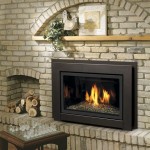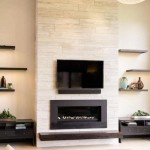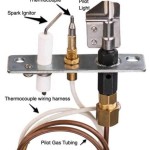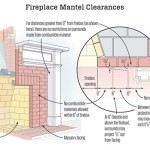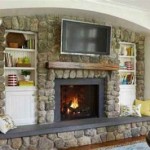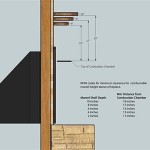Replacing a Gas Fireplace with a Wood Stove: A Comprehensive Guide
The decision to replace a gas fireplace with a wood stove represents a significant shift in home heating strategy. While gas fireplaces offer convenience and ease of use, wood stoves provide a more traditional heating experience, potentially lower long-term fuel costs, and a unique aesthetic appeal. This article aims to provide a comprehensive overview of the factors to consider, the process involved, and the implications of such a conversion.
Before embarking on this project, it is crucial to thoroughly assess the suitability of a wood stove for the home and lifestyle. Factors such as the home's insulation, space availability, local regulations, and personal preferences must be carefully evaluated. A well-informed decision will ensure a safe, efficient, and satisfying heating solution.
Evaluating the Feasibility of a Wood Stove Installation
The first step involves a thorough assessment of the home's physical structure and existing heating system. The existing gas fireplace's location will influence the complexity and cost of the conversion. The presence of an existing chimney is a significant advantage, but it may still require modifications or relining to meet the requirements of a wood stove.
Consider the space available for the wood stove itself, as well as the necessary clearances from combustible materials. Wood stoves radiate significant heat, and maintaining adequate clearances is crucial for fire safety. Local building codes and manufacturer's specifications will dictate the minimum clearances required. Insufficient clearances can lead to a fire hazard and invalidate homeowner's insurance policies.
The structural integrity of the floor beneath the proposed wood stove location must also be assessed. Wood stoves are heavy appliances, and the floor must be capable of supporting the weight without sagging or deformation. Reinforcement may be necessary, particularly in older homes. This assessment should be conducted by a qualified structural engineer or contractor.
Finally, evaluate the home's insulation. Inadequate insulation will result in heat loss and reduce the efficiency of the wood stove. Consider upgrading insulation in walls, attics, and floors to maximize the benefits of wood heating. This will also reduce overall energy consumption and improve the comfort of the home.
Meeting local air quality regulations is also crucial. Many municipalities have restrictions on wood-burning appliances, particularly during periods of high air pollution. Research local regulations and ensure that the chosen wood stove meets emission standards. EPA-certified wood stoves are designed to burn cleaner and more efficiently, reducing particulate emissions.
The Conversion Process: From Gas Fireplace to Wood Stove
The conversion process involves several key stages, including the removal of the gas fireplace, the preparation of the chimney, the installation of the wood stove, and the connection of the stove to the chimney. Each stage requires careful planning and execution to ensure a safe and efficient installation.
The first step is to disconnect the gas supply to the existing fireplace. This should be performed by a licensed gas fitter to ensure the line is properly capped and safety standards are met. Failure to properly disconnect the gas supply can create a significant safety hazard.
The gas fireplace unit is then removed, taking care to avoid damaging the surrounding structure. The fireplace opening may need to be modified to accommodate the dimensions of the wood stove. This may involve framing adjustments and the installation of a non-combustible hearth extension.
A thorough inspection of the existing chimney is essential. Creosote buildup from previous wood-burning appliances can pose a significant fire hazard. The chimney should be professionally cleaned and inspected for cracks or other damage. Relining the chimney may be necessary to ensure proper draft and prevent flue gases from leaking into the home.
The wood stove is then carefully positioned in the prepared location, ensuring that it meets all clearance requirements. The stovepipe is connected to the stove and the chimney, using appropriate connectors and sealing materials. Proper installation of the stovepipe is critical for preventing flue gas leaks.
Finally, the area around the wood stove is prepared with a non-combustible hearth extension. This protects the floor from sparks and embers and provides a safe landing area for loading wood. The hearth extension should meet local building code requirements for size and material.
Following installation, a professional inspection is recommended to ensure that the wood stove is properly installed and operating safely. This inspection will identify any potential problems and ensure that the installation meets local building code requirements.
Considerations for Wood Stove Operation and Maintenance
Operating and maintaining a wood stove requires ongoing attention and commitment. Proper wood selection, burning techniques, and regular maintenance are essential for safe and efficient operation. Failure to follow these guidelines can lead to creosote buildup, chimney fires, and reduced heating efficiency.
Use only seasoned firewood that has been properly dried for at least six months. Green wood contains high levels of moisture, which reduces burning efficiency and increases creosote buildup. Seasoned wood should have a moisture content of less than 20%. Moisture meters can be used to check the moisture content of firewood.
Establish a proper draft by opening the air controls and lighting the fire with kindling and small pieces of wood. Once the fire is established, gradually add larger pieces of wood. Avoid overloading the firebox, as this can lead to incomplete combustion and increased smoke production.
Burn the fire hot enough to maintain a clean and efficient burn. A smoldering fire produces excessive creosote and reduces heating efficiency. Regularly check the chimney for creosote buildup and clean it as necessary. The frequency of cleaning will depend on the type of wood burned and the burning habits.
Dispose of ashes properly in a metal container with a tight-fitting lid. Ashes can contain hot embers that can ignite combustible materials. Place the container away from the house and any flammable materials.
Regularly inspect the wood stove and chimney for any signs of damage or deterioration. Check for cracks in the stove body, loose stovepipe connections, and damage to the chimney liner. Repair any problems promptly to prevent further damage and ensure safe operation.
Before each heating season, have the wood stove and chimney professionally inspected and cleaned. This will ensure that the system is operating safely and efficiently and will identify any potential problems before they become serious.
Beyond the practical aspects, replacing a gas fireplace with a wood stove involves lifestyle considerations. Wood stoves require a significant time investment for wood sourcing, splitting, and stacking. Users must also be prepared for the dust and mess associated with wood handling. Furthermore, monitoring the stove and tending the fire is a consistent responsibility.
The environmental impact of wood burning is another factor to consider. While wood is a renewable resource, burning wood releases particulate matter and other pollutants into the air. Choosing an EPA-certified wood stove and following proper burning techniques can help to minimize emissions. Consider the local air quality regulations and the overall environmental impact of wood heating before making the decision to switch from gas to wood.
The aesthetic appeal of a wood stove is often a significant factor in the decision-making process. Wood stoves provide a visual focal point and a warm, inviting ambiance. The crackling sound of the fire and the radiant heat create a cozy and comfortable atmosphere. However, this aesthetic appeal comes with the responsibilities outlined above.
Ultimately, the decision to replace a gas fireplace with a wood stove is a personal one that should be based on a careful evaluation of the factors outlined in this article. By considering the feasibility, the conversion process, the operational requirements, and the environmental impact, homeowners can make an informed decision that will provide years of safe, efficient, and enjoyable wood heating.

Replacing A Gas Fire With Wood Burner

Do You Want To Replace Your Gas Fire With A Woodburner

Can You Convert A Gas Fireplace To Wood Burning Stove Direct Stoves

Converting A Fireplace To Wood Burning Stove Chesneys

Replacing A Gas Fireplace With Real Wood Buringing One Hometalk

Replacing A Wood Burning Stove With Gas

Converting A Fireplace To Wood Burning Stove Chesneys

Do You Want To Replace Your Gas Fire With A Woodburner

What Does It Cost To Install A Fireplace Vs Wood Stove Stamford Fireplaces

Is It Time To Replace Your Old Gas Fire For A More Efficient Wood Burning Stove Alfred Poppins


